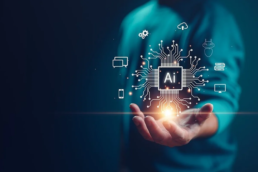The potential for machine learning (ML) to transform business continues growing rapidly. However, hype and technical jargon often obscure ML’s true capabilities and limitations for business leaders. This article provides a human-centered overview of ML tailored to a non-technical audience. The goal is demystifying ML’s core concepts, real-world benefits and implementation challenges.
Defining ML in Human Terms
At its core, ML refers to computer algorithms that learn patterns from data in order to make predictions or decisions without being explicitly programmed for the specific task. But what does this mean?
In human terms, ML algorithms “learn” by analyzing examples and experience just as people do. By examining millions of cat and dog photos, an image recognition algorithm can learn the patterns distinguishing cats vs. dogs. It builds an internal statistical model of those patterns rather than having rules manually coded by programmers.
This ability for computers to learn from data and improve with more experience brings huge potential. ML offers a fundamentally more scalable way to solve problems than writing rules by hand for every scenario.
Augmenting Human Capabilities
Crucially, ML augments rather than replaces human intelligence. The most valuable applications combine an algorithm’s number-crunching skills with human strengths like creativity, empathy, and contextual reasoning.
For example, an ML model can analyze x-rays for abnormalities, but radiologists still interpret the context of other patient factors. Financial advisors leverage robo-advisors for portfolio analytics but add their personal understanding. Together, humans and ML achieve more than either could alone.
Demystifying Common ML Types
While often treated monolithically, useful ML algorithms actually learn in diverse ways:
- Computer vision models identify objects in images and video through advanced pattern recognition. This enables photo classification, medical imaging analysis, industrial inspection and more.
- Natural language processing models understand speech and text via linguistic rules and statistical relationships. They power chatbots, search, sentiment analysis and document summarization.
- Forecasting models uncover signals in time series data to predict future trends. This improves supply chain planning, demand forecasting, econometric projections, and more.
- Recommendation engines learn correlations between users, products and content to suggest personalized next actions. They enhance ecommerce, advertising and customer experiences.
- Anomaly detection identifies deviations in data to catch rare events like fraud, system faults or diseases. By surfacing outliers, issues can be addressed early.
These categories only scratch the surface. Combining ML types enables even more powerful applications.
Realizing Business Value
ML’s capabilities enable diverse value creation:
Automating high-volume repetitive tasks – ML excels at processing high-volume structured data like forms, claims documents and inventory records much faster than humans. Efficiency gains drive major cost savings.
Personalizing at scale – ML powers individualized recommendations, custom content and tailored experiences for each customer. This increases engagement, conversion and retention.
Uncovering insights – By analyzing millions of data points across disparate datasets, ML reveals trends and signals humans easily miss. This informs strategy and planning.
Simulating complex scenarios – ML can rapidly model hypotheticals under various conditions. This enables data-driven risk analysis, forecasting, portfolio optimization and more.
Anticipating emerging patterns – Early detection of anomalies in customer behavior, market movements or production flows enables rapid response. ML serves as an early warning system.
These applications demonstrate that while ML has limitations, its capabilities in the right contexts are extremely powerful.
The Implementation Challenge
However, realizing ML’s full potential involves surmounting considerable organizational and technical complexities:
- ML requires massive quantities of high-quality, well-labeled training data. Preparing data is challenging and time consuming.
- Algorithms learn biases and limitations from data. Thoughtful design is essential to avoid perpetuating historical inequities.
- Even mathematically sound models degrade in unpredictable environments. Maintaining models with new data is critical and overlooked.
- ML engineers remain scarce. Most companies lack the specialized skills to build and implement models. Competition for talent is fierce.
- To drive impact, ML must integrate tightly with surrounding processes, systems and user experiences. This is difficult.
- Ongoing monitoring for accuracy, ethics and safety is crucial as models influence higher-stakes decisions.
While the technology continues advancing rapidly, most organizations underestimate the investments and planning required to harness ML successfully. Business leaders need balanced expectations and should view ML as a long-term capability to build. But wise implementations can deliver tremendous competitive advantage.
Demystifying the ML Journey
Machine learning holds transformative potential, but hype often obscures the effort required. Leaders should view ML not as an out-of-the-box solution, but rather a long-term capability requiring sustained strategy, investment and coordination. With pragmatic expectations and deliberate efforts to address ML’s multifaceted complexities, companies can integrate it responsibly into operations, products and services – unlocking significant benefits along the way.




